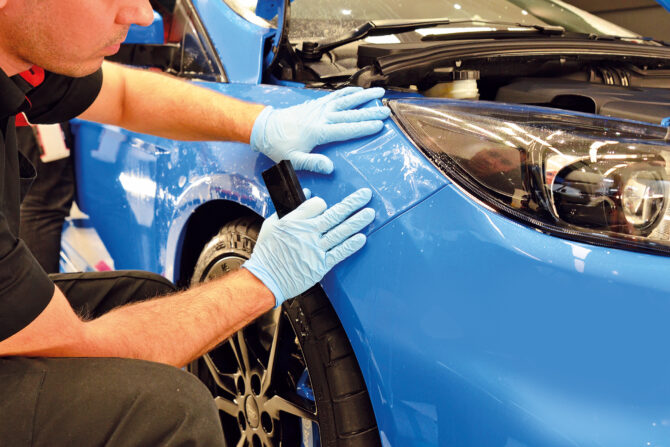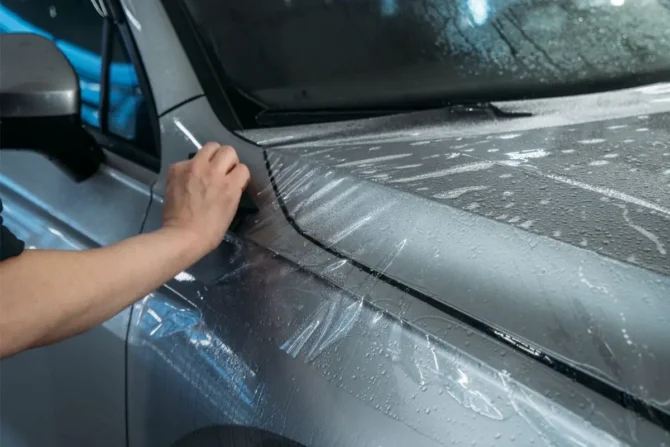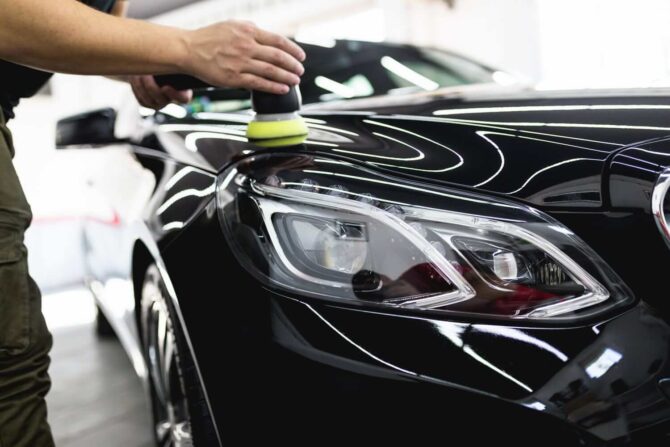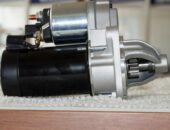
Paint protection film (PPF) is a thin layer of polyvinyl film that’s applied to the exterior of your vehicle to protect its paint from scratches, dents, and other forms of damage. It’s typically installed by a professional detailer or mechanic during a full-service wash or at a standalone location like an auto shop or car wash.
The process takes about an hour and costs between $150 and $200 depending on the size of your vehicle—and can easily be done in one visit!
What is a Car Paint Protection Film?
Car paint protection film is a thin, clear film that’s applied to the surface of your vehicle. It protects the paint from damage by sunlight and road grime.
It’s not a coating or wax–it’s actually a protective film! That means it isn’t going to wear off, chip away at your car and leave you with unsightly stains like other products might do over time (although there are some exceptions).
The film is applied to the surface of your vehicle during a professional paint protection installation, and it’s designed to be extremely durable. It’s virtually invisible on most types of cars but will protect your paint from damage caused by sunlight and road debris.
How Much Does PPF Cost?

Source: evo.co.uk
The cost of PPF depends on several factors. The first is the size and length of coverage. A typical car will need about 30 square feet of PPF, so if your vehicle is smaller or not as long, you may need less. You also have to take into account how many panels are being covered by each piece of film–the front bumper alone can require several pieces!
This means that the amount you spend on PPF will vary depending on what kind of car you have and where it needs protection (if at all). But don’t worry–it’s still an investment worth making because it lasts for years with proper care. And when it comes time for resale value? Well…that’s where things really start looking up!
How Long Does It Last?
The lifespan of a car paint protection film depends on several factors.
- How often do you wash your car? The more frequently you wash, the faster PPF will deteriorate. If you have the time and patience to wash your car less frequently (once every two weeks or so), then this will help ensure that it lasts longer.
- Where do you live? If you live in an area with high humidity and frequent rainfalls, then PPF has less time before it starts showing signs of wear. This is because these conditions encourage mold growth on top of the film which leads to discoloration over time as well as peeling/cracking when washed off later down the line due to being stuck underneath layers upon layers of dirt built up around each individual layer underneath!
How to Identify PPF on a Used Car

Source: vehicleunleashed.com
When you’re looking to buy a used car, it’s important to know what type of paint protection film has been applied to the vehicle.
The easiest way to identify PPF is by looking for a layer of clear film on the vehicle’s body panels and windows. You may also be able to see it on mirrors, headlights and taillights as well.
If you can’t see the protective film on a used car, ask the seller if it has been applied. If they say yes, make sure that it is a high-quality brand such as 3M or NanoPro and not some cheap imitation product.
Do I Need Paint Protection Film for My Car?
If you’re reading this, it’s likely that you have a car. And if you have a car, then there’s a good chance that at some point in time someone has scratched or dented your paint job.
If this is the case and your vehicle has been damaged by road debris or other objects hitting its surface, then chances are good that repairing the damage will cost more than just having the film applied in the first place.
In addition to keeping your paint looking like new for years to come (with proper care), PPF also helps prevent further damage from occurring due to scratching from keys or coins in pockets or bags as well as everyday wear-and-tear like bird droppings or tree sap getting stuck onto unprotected surfaces over time
Car Paint Protection Film is a Great Way to Keep Your Vehicle’s Paint Pristine, But it’s Not the Only Option

You should consider PPF by ID Protection if you want to protect your car’s paint.
However, there are other options available:
- Waxing the car’s body regularly will help keep it clean and prevent damage from occurring. Regular washing can also help prevent scratches, but it won’t last forever; eventually dust and debris will build up on top of the wax layer, which makes it more vulnerable to scratches from sand or rocks in the road surface.
- If you don’t want to use PPF but still want some protection for your vehicle’s finish, consider using an automotive cleaner instead of soap when washing your vehicle–this will reduce its chances of getting scratched by grit during washing!
If you’re looking for a paint protection film that’s safe for your car, consider using nano-coating instead. This is a newer technology that can be applied over wax and sealants or on its own; it won’t protect against scratches as well as PPF, but it will help prevent other types of damage such as oxidation and corrosion.
Conclusion
If you’re looking for a way to protect your car’s paint, PPF is the best option. It can last for years and keep it looking as good as new. If you have any questions about whether or not this type of film would be right for you and your vehicle, contact us today!



